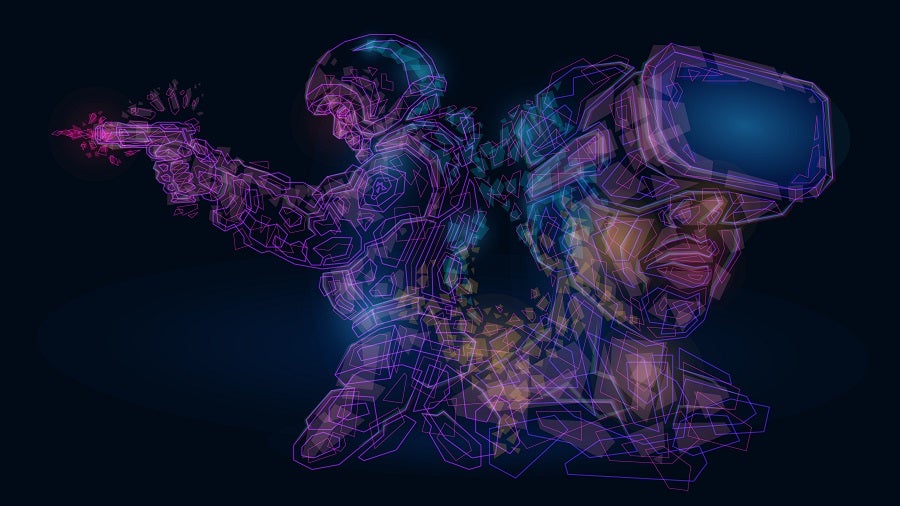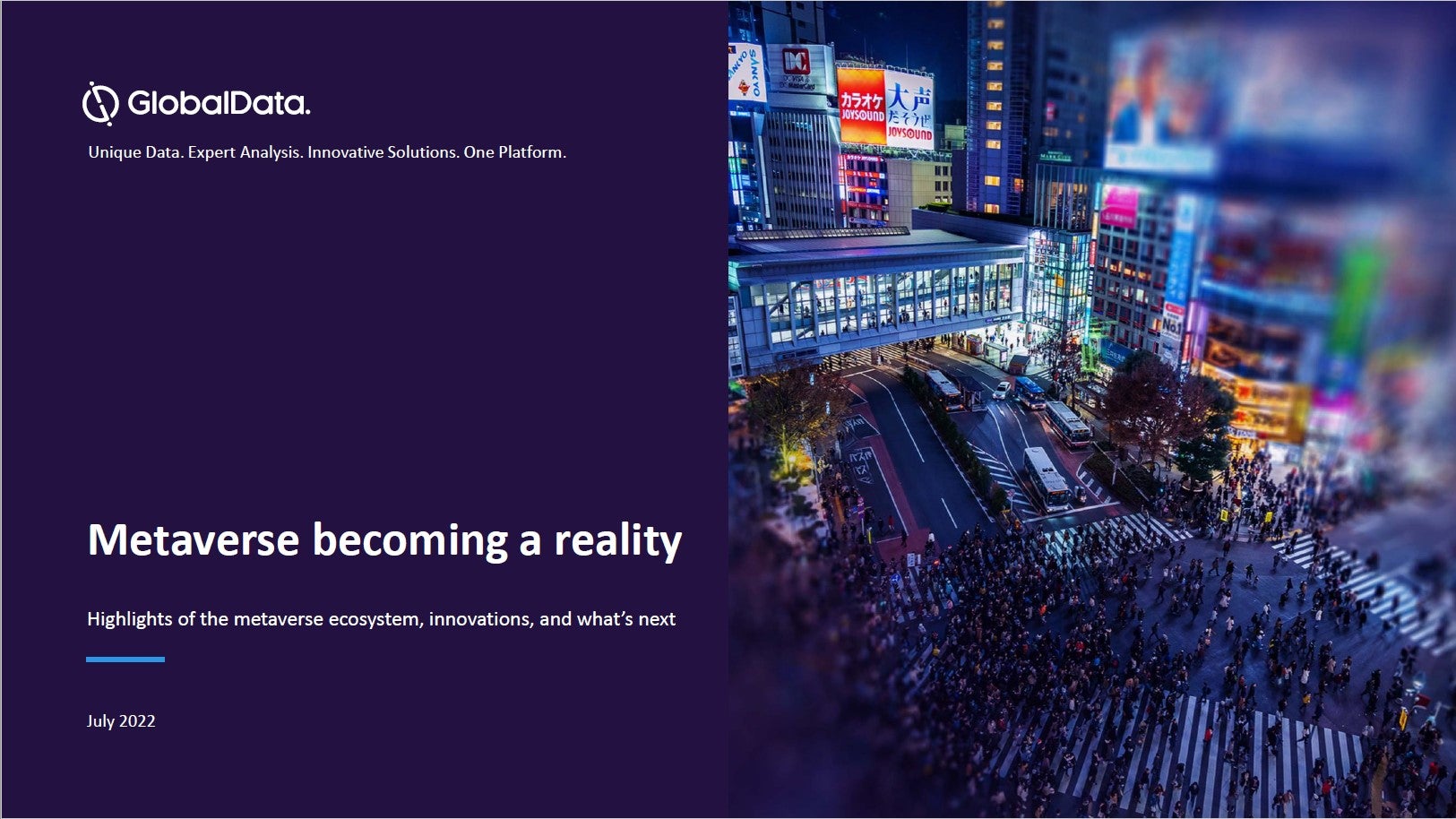
The idea of metaverse compels excitement in some, while making others cringe. Most of us have seen films or video games where the idea of a synthetic world comes to life, where participants can engage with each other free from the limits of reality. Like it or not, the metaverse did not elude the attention of the defence industry.
What is the metaverse?
There is no consensus around the definition of the metaverse, and explaining it is a bit like trying to define the internet. It is not a singular technology or even a singular concept. But for argument’s sake, this article will use a workable definition provided by War on the Rocks writers Jennifer McCardle and Caitlin Dohrman: “A metaverse is a series of interconnected and immersive virtual worlds that afford their users a sense of presence via agency and influence.”
How well do you really know your competitors?
Access the most comprehensive Company Profiles on the market, powered by GlobalData. Save hours of research. Gain competitive edge.

Thank you!
Your download email will arrive shortly
Not ready to buy yet? Download a free sample
We are confident about the unique quality of our Company Profiles. However, we want you to make the most beneficial decision for your business, so we offer a free sample that you can download by submitting the below form
By GlobalDataIt is similar to virtual or augmented reality in that it provides a spectrum where the physical and digital can meet. In military settings, these platforms are mostly used for the purpose of training. Commercial metaverse technology will not satisfy the military due to the lack of dexterity. But the price of the best available equipment on the market is eye-watering, and defence departments may adopt technologies in the early stages with the aim of improving them to fit the requirements of the armed forces.
“If there is a greater push for cheaper but higher quality haptics and cheaper things like motion capture, and investments are going into those capabilities, then it could end up yielding something important for the military in the future,” says James Crowley, business development director at immersive urban training expert 4GD. “This will both improve the technology for the civilian market, and will also make it cheaper and much more accessible.”
Defence in the metaverse
Militaries have been using different forms of rudimentary metaverses for training for years. The development of the first simulator networking (SIMNET), where different virtual words were stitched together, started in the 1980s by the US military. SIMNET was a wide area network with vehicle simulators and displays for real-time distributed combat simulations that included tanks, helicopters and planes on a virtual battlefield. In the past two decades, the fidelity and effectiveness of simulated training and synthetic environments have grown momentously.
Nick Brown, defence product marketing director at distributed computing company Hadean, says: “Perhaps we can categorise the defence metaverse as an ‘industrial metaverse’. While the more familiar metaverse is focused on entertainment and social interaction of itself, industrial metaverses use the same technology in order to enhance activity in the physical world.”
Brown believes there are three key aspects to the metaverse that make it so appealing to defence. “Firstly, the virtual worlds of the metaverse are getting increasingly better at connecting more people from disparate locations,” he says. “Secondly, they can be used to simulate physical events at a high fidelity such that greater knowledge about the ‘real world’ can be derived.”
The third point, Brown says, is the metaverse’s ability to offer an immersive experience that would be too expensive, logistically or economically unfeasible or simply impossible to conduct physically. Combining these three aspects when placed into the concept of modern military acquisition, force development and training requirements, it is clear why defence is interested in the metaverse.
Crowley expects continued military interest in the metaverse in the future. “There’s an area for influence and an area where we need to be conscious of disparate groups coming together, and perhaps forming either very short-term collectives or of longer-term political groupings and we need to be fairly politically live to that as organisations,” he says.
He says if the metaverse changes the way individuals come together and the way information is exchanged, militaries and governments will need to be aligned to know how those interactions are taking place.
The challenges of the metaverse
It is also very important to consider the operational challenges of the metaverse. Building the computer power and infrastructure capable of running high-fidelity virtual worlds across a range of devices and handling enormous amounts of data will be equally imperative for the metaverse to exist.
“Being able to create these kinds of simulations may be cutting edge, but they’re no good if you need a PC the size of a car seat next to you while you run it,” Brown explains. “Every participant, whose device may vary, needs to be able to view and act within the simulation.
“This is where distributed cloud and edge computing are set to change the game. If you can dynamically scale computation across cloud and edge environments, then this vastly lowers the requirements needed by devices to run the simulation.”
Crowley echoes the importance of computer power by saying: “This is probably the most impactful part of it. Unless you can reduce your latency to a point that it doesn’t make people ill and feels realistic, unless you can store move and communicate data across various different people in different simulators, you’re not going to provide a practical training tool.”
Another major challenge in developing an open metaverse where militaries of different countries could engage with each other is the aspect of security.
“Ultimately, allied operations, for example among Nato countries, will be greatly enhanced by completing training simulations together, incentivising the creation of an open defence metaverse for them,” says Brown. He could envisage an open metaverse for defence where allied forces could all plug into the same virtual version of a given strategic context.
Crowley warns, however, that defence will have to be ruthless and extremely pragmatic when adopting certain technologies. Militaries need to ensure they do not take on new technologies just because they are the most recent on the market, but ensure they can provide the required results.
The development and employment of various metaverses and augmented realities are no new to defence, but the industry still has a long way to go before entering the metaverse for military purposes..








